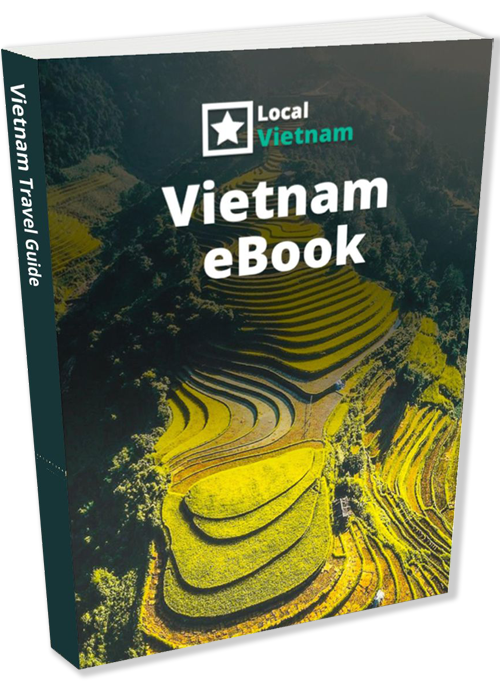What is Tra Que Vegetable Village?
Tra Que is a small farming village located just 3 kilometers from Hoi An Old Town, in Cam Ha Commune. Nestled between the Co Co River and Tra Que Lagoon, the village is blessed with fertile soil and a rich water source — perfect conditions for growing vegetables. For nearly 400 years, local families have been using organic farming methods here, cultivating more than 20 types of leafy greens and herbs without chemical fertilizers.
What makes Tra Que special is its continued use of traditional techniques. Farmers use seaweed from the nearby river to enrich the soil, giving the vegetables their distinctive freshness and flavor. Many of these herbs are essential to Hoi An’s cuisine — such as basil, mint, and flagrant knotweed — making the village an important part of local food culture.
Although Tra Que is a real, functioning village, it has also adapted to tourism. Some travelers wonder if it’s still an authentic experience — and the answer is yes. The village wasn’t built for tourists, it simply became more accessible due to its location near Hoi An. Tourism helps local families earn extra income, and it allows visitors to experience traditional farming in a way that wouldn’t be possible just showing up in a remote rural village. It’s not a mass tourism spot, and even though it’s well-known, it remains quiet and intimate — still offering a genuine connection with local life.
Things to do in Tra Que Vegetable Village
1. Walk or cycle through the fields
Tra Que is a very small village — you could cycle through it in just a minute or two. That’s why it’s best to park your bike and explore on foot. Walking lets you take in the views, observe the farming activities, and stop for photos. If you’re doing a longer cycling trip around Hoi An’s countryside, Tra Que is a great spot to take a break.
2. Join a farming experience
One of the most popular activities in Tra Que is joining a hands-on farming session with a local family. You’ll get to water the vegetables with traditional shoulder buckets, loosen the soil with local tools, and maybe even help harvest herbs. It’s a light activity (no hard labor), but gives great insight into daily life — plus, it’s a fun photo opportunity. These experiences are typically arranged through a tour or local homestay.
3. Take a cooking class
Many of the farming experiences in Tra Que are combined with cooking classes. After harvesting vegetables and herbs, you’ll learn how to prepare traditional Vietnamese dishes like bánh xèo (Vietnamese pancakes), spring rolls, or cao lầu noodles. These classes are usually held in small outdoor kitchens, with ingredients coming straight from the garden — a true garden-to-table experience.
4. Have lunch at a local restaurant
You don’t have to join a tour to enjoy Tra Que. You can simply stop by for lunch at one of the garden restaurants with views over the fields. Many of them use fresh produce grown right next to your table. A few popular restaurants include Baby Mustard, Tra Que Garden, and Kumquat BBQ Restaurant — all with peaceful settings and local-style dishes.
5. Try a foot massage or herbal treatment
Some restaurants or family-run guesthouses in the village offer foot massages or herbal treatments using Tra Que-grown herbs. It’s a nice way to relax your legs after a cycling trip or walking tour. While it’s not a spa-level experience, it’s simple, local, and unique to the village.
How to visit Tra Que Vegetable Village
Tra Que Vegetable Village is located just 3 kilometers from Hoi An Old Town, between the center and An Bang Beach. It’s easy to reach — whether on a tour or on your own — and doesn’t require a lot of planning.
As part of a tour
Many travelers visit Tra Que as part of an organized tour. These tours vary widely:
- Cycling tours: Some bike tours stop briefly in the village for a walk or visit to a local garden. These are great if you want to combine rice field scenery with a short cultural stop.
- Farming & cooking tours: You can book a more hands-on experience where you join farmers in the garden — watering vegetables, preparing soil, picking herbs — followed by a cooking class using those ingredients.
- Full experience tours: Some tours offer a combination of cycling, farming, and cooking — a full countryside experience in one package.
Getting there by yourself
You absolutely don’t need a tour to visit Tra Que. If you just want to explore, take photos, or have lunch in the village, you can get there on your own. Here are your best options:
- Cycling: The most recommended way to visit. Tra Que is directly on the route from Hoi An Old Town to An Bang Beach, and cycling lets you enjoy the peaceful countryside along the way. You can stop at Tra Que for a short walk or meal.
Check our free self-guided cycling route that includes Tra Que, the rice fields, and beach. - Scooter: Renting a scooter gives you flexibility to explore Hoi An’s surroundings, including Tra Que. Scooter rental costs around 100,000–150,000 VND (4–6 USD) per day. You can park outside the village and walk through.
- Taxi: Taxis can also take you to Tra Que. Although the inner village roads are quite narrow, taxis can still drop you off nearby. There are no taxis waiting in the village, but since it’s close to town, you can easily use Grab or another ride-hailing app to get picked up — usually within 5 minutes.
Tips for visiting Tra Que Vegetable Village
Perfect for kids
Tra Que is a great spot for families. Children often enjoy helping water the plants, trying the farming tools, or even just running around the quiet, green surroundings.
Respect the farmers and their work
This is a real farming village, not a museum. If you’re not part of a tour, avoid walking through the vegetable beds or stepping off the paths just to take photos — it can damage the crops and disrupt the farmers.
Prepare to get dirty (a little)
If you join a farming tour, expect some hands-on activities. Most places provide sandals and a cover to protect your clothes, but it’s still best not to wear your favorite outfit.
Protect yourself against the weather
You’ll be out in the open. If you’re not on a tour where they hand out conical hats, bring sunscreen, a cap, sunglasses, or even a light long-sleeve shirt for sun protection. In rainy season, bring a raincoat just in case.
Bring cash
There are a few small restaurants and places offering services in the village, but card payment is not common. Bring cash if you want to eat or try a local activity.
Book tours or classes in advance
If you want to join a cooking class or farming activity, plan ahead. These often happen at fixed times and may not be available on the spot — especially if you arrive outside the main activity hours.


